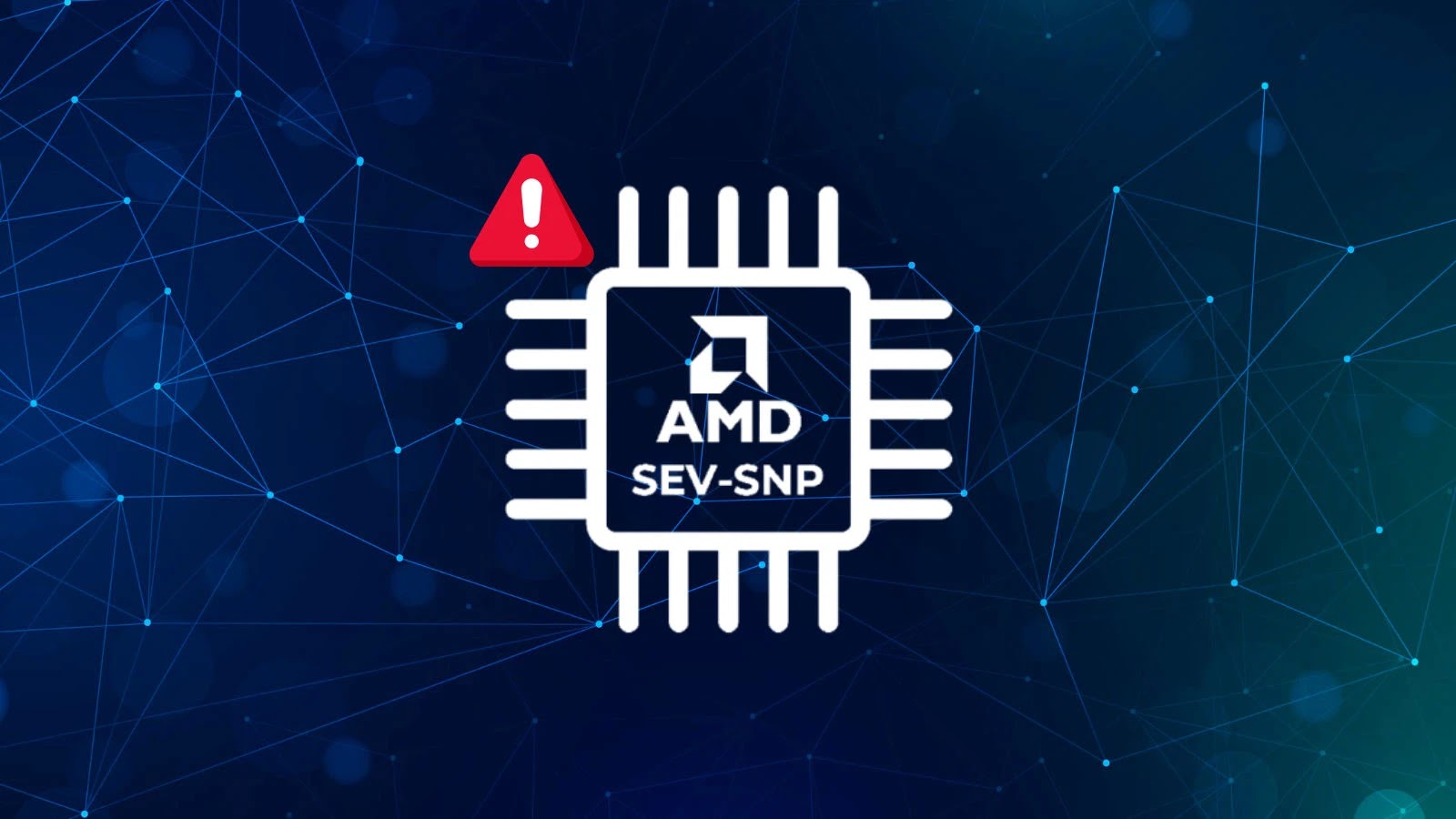
New RMPocalypse Attack Let Hackers Break AMD SEV-SNP To Exfiltrate Confidential Data
RMPocalypse: Unmasking a Critical Threat to AMD SEV-SNP Confidential Computing
In the evolving landscape of cloud security, confidential computing stands as a pillar, promising unprecedented protection for sensitive data even while in use. AMD’s Secure Encrypted Virtualization with Secure Nested Paging (SEV-SNP) is a flagship technology enabling this, underpinning the security architectures of major cloud providers like AWS, Azure, and Google Cloud. However, a recently disclosed vulnerability, dubbed RMPocalypse, has cast a significant shadow over this promise, demonstrating how attackers could bypass AMD SEV-SNP protections to exfiltrate confidential data.
What is AMD SEV-SNP and Why Does it Matter?
AMD SEV-SNP is a critical security feature designed to isolate virtual machines (VMs) from the host hypervisor. Essentially, it encrypts the VM’s memory and cryptographically integrity-protects its state, ensuring that even if the hypervisor is compromised, it cannot view or tamper with the VM’s sensitive data. This technology is fundamental for confidential computing, allowing organizations to process highly sensitive information in cloud environments with a reduced risk profile. It’s the digital equivalent of a fortified vault for your data during active processing.
Understanding the RMPocalypse Attack
The RMPocalypse attack (tracked as CVE-2023-20592) directly targets a flaw in the initialization of the Reverse Map Table (RMP) within AMD SEV-SNP. The RMP is a crucial component responsible for enforcing memory integrity, preventing the hypervisor from unauthorized access or modification of guest VM memory. The exploit leverages a vulnerability where the RMP is not properly initialized, creating a window of opportunity for a malicious hypervisor to manipulate the memory mappings without detection. This effectively allows the hypervisor to bypass the core protections offered by SEV-SNP, leading to potential data exfiltration.
The immediate consequence is a critical breach of confidentiality. Attackers who successfully execute RMPocalypse can gain unauthorized access to the sensitive data residing within the compromised confidential VM. This includes proprietary algorithms, customer personal identifiable information (PII), financial records, or any other data that organizations rely on AMD SEV-SNP to protect.
Impact on Cloud Providers and Users
Given AMD SEV-SNP’s widespread adoption by leading cloud providers, the RMPocalypse attack carries significant implications. Organizations that deploy confidential workloads on AWS, Azure, and Google Cloud, relying on AMD EPYC processors with SEV-SNP capabilities, are directly affected. The trust placed in hardware-level security guarantees is undermined, necessitating immediate attention and remediation efforts from both cloud providers and their customers.
For cloud users, this means a re-evaluation of their security posture for confidential computing workloads. While cloud providers are responsible for deploying fixes, users must understand the nature of the threat and ensure their own systems and applications are updated and configured to leverage the available patches effectively.
Remediation Actions
Addressing RMPocalypse requires a multi-layered approach involving kernel updates and close coordination with cloud service providers.
- Apply Vendor Patches: AMD has released microcode updates to mitigate the vulnerability. It is imperative that affected systems receive these updates promptly. This applies to both cloud providers at the hypervisor level and potentially to on-premise deployments of AMD EPYC processors.
- Operating System Updates: Ensure that guest operating systems running within SEV-SNP protected VMs are updated to the latest stable versions. These updates often include kernel patches that can help reinforce security posture, even if the primary fix comes from firmware.
- Monitor Cloud Provider Advisories: Organizations utilizing confidential computing in public clouds must actively monitor security advisories and guidance from AWS, Azure, and Google Cloud. These providers will communicate their patching schedules and any specific actions customers need to take.
- Security Audits and Hardening: Conduct thorough security audits of confidential computing environments. Harden guest VMs by applying the principle of least privilege, minimizing the attack surface, and implementing robust logging and monitoring.
- Incident Response Planning: Review and update incident response plans to account for potential breaches of confidential computing environments. This includes procedures for detecting, containing, and recovering from data exfiltration events involving SEV-SNP.
Tools for Detection and Mitigation
While direct “detection tools” for RMPocalypse itself are primarily at the hypervisor or silicon level, ensuring overall system health and update status is crucial. The following table lists general tools relevant to system hardening and vulnerability management that contribute to mitigating such threats.
| Tool Name | Purpose | Link |
|---|---|---|
| Linux Kernel and OS Update Utilities | Ensures the underlying OS and kernel are up-to-date with the latest security patches. | sudo apt update && sudo apt upgrade (for Debian/Ubuntu) / sudo dnf update (for Fedora/RHEL) |
| AMD Security Advisories | Official source for AMD processor security bulletins and microcode updates. | AMD Product Security |
| Cloud Provider Security Dashboards | Monitor patch status and security recommendations for cloud-hosted VMs. | Varies by CSP (e.g., AWS Security Hub, Azure Security Center, Google Cloud Security Command Center) |
| Vulnerability Scanners (e.g., Nessus, OpenVAS) | Identify known vulnerabilities in guest OS and applications within the VM. | Tenable Nessus | OpenVAS |
Conclusion
The RMPocalypse exploit, CVE-2023-20592, serves as a stark reminder that even sophisticated hardware-backed security features are not impervious to attacks. The ability for a malicious hypervisor to bypass AMD SEV-SNP protections for data exfiltration represents a serious challenge to the integrity of confidential computing. Organizations leveraging this technology must prioritize the application of vendor patches, maintain vigilant monitoring of cloud provider advisories, and reinforce their overall security posture. Proactive remediation and a robust understanding of such vulnerabilities are essential to maintaining the trust and security of sensitive workloads in the cloud.





